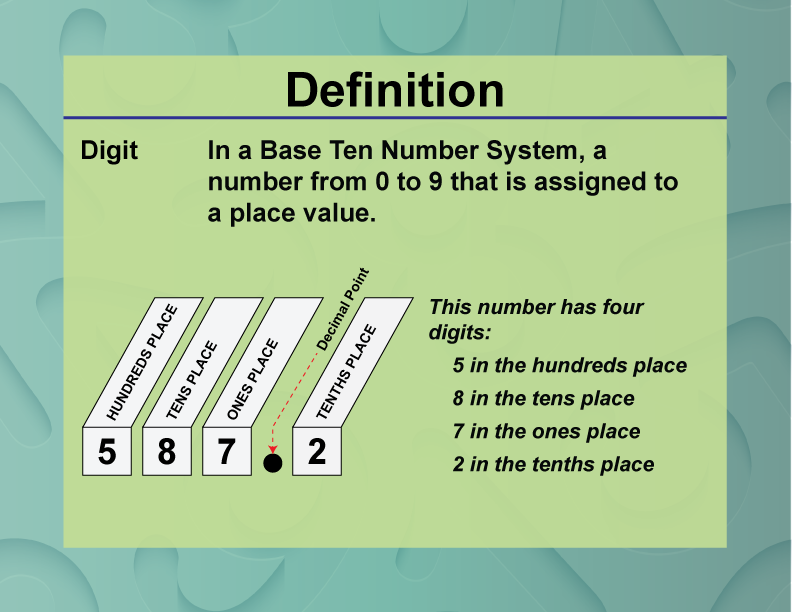
Display Title
Definition--Place Value Concepts--Digit
Display Title
Digit

Topic
Place Value
Definition
A digit is any of the ten symbols (0-9) used to represent numbers in the base ten number system.
Description
Digits are the fundamental symbols used in the base ten number system, which is the most common numeral system used worldwide. Each digit has a place value that determines its contribution to the overall value of a number. For example, in the number 345, the digit 3 represents 300 due to its position in the hundreds place.
In real-world applications, digits are used in all forms of numerical representation, from simple counting to complex financial calculations. Understanding digits and their place values is crucial for performing arithmetic operations and solving mathematical problems.
In algebra, digits are essential for understanding the structure of numbers and their operations, such as addition, subtraction, and multiplication. For example, when multiplying 23 by 45, each digit's place value must be considered to achieve the correct result.
Teaching digits and their place values is vital in math education as it forms the foundation for understanding more complex mathematical concepts. It helps students develop a strong number sense and prepares them for advanced topics in mathematics.
Teacher's Script: "Let's look at the number 678. The digit 6 is in the hundreds place, 7 is in the tens place, and 8 is in the units place, meaning 678 is 600 + 70 + 8."
For a complete collection of terms related to Place Value click on this link: Place Value Collection
| Common Core Standards | CCSS.MATH.CONTENT.1.NBT.B.2, CCSS.MATH.CONTENT.1.NBT.C.4, CCSS.MATH.CONTENT.2.NBT.A.1, CCSS.MATH.CONTENT.3.NBT.A.1, CCSS.MATH.CONTENT.4.NBT.A.1, CCSS.MATH.CONTENT.5.NBT.A.4 |
|---|---|
| Grade Range | 1 - 4 |
| Curriculum Nodes |
Arithmetic • Numbers and Patterns • Place Value |
| Copyright Year | 2021 |
| Keywords | place value |